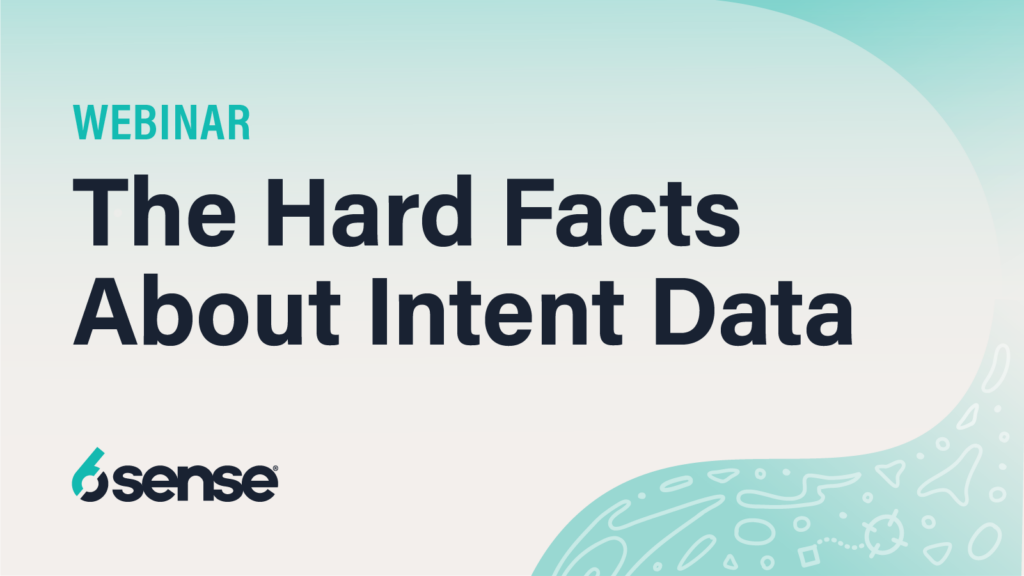Diversification in business is usually good, especially in manufacturing. Manufacturers with large product lines can reach more potential customers and offer additional value to existing customers.
However, companies with a diverse array of products face the challenge of ensuring each represents a real opportunity to drive revenue and provide ROI.
Manufacturers that want to understand the total market demand for their products — and uncover which companies are ready to buy — need the right tools to find those opportunities.
When you leverage the right technology, you can discover:
- Buyers you didn’t know existed
- Demand for additional products at existing accounts
- Activities and topics driving the most engagement
- Overall demand for each of your products
Let’s look at how you can ensure you are capitalizing on every opportunity for all of your products.
Grow Your Sales
Identifying Potential Customers
Static account lists won’t reveal which businesses have a real-time need for a product that you offer.
When a company suddenly needs or shows interest in one of your products, it’s imperative you know about the new demand — before your competitors — to win the sale.
One of the advantages 6sense offers customers is dynamic account targeting. This capability examines your historical sales data to identify characteristics and behaviors of your best buyers — then automatically looks for similar businesses and adds them to your target account list.
You have control over this process by setting what your Ideal Customer Profile should look like, but artificial intelligence can then scour the web to find hidden prospects that look like a strong fit for your products and are showing signals they’re likely to buy soon.
How does this play out in real life?
6sense continually plumbs the internet depths to uncover firmographic data that indicates which businesses are growing (or shrinking), receiving funding, hiring, etc. We also track industry, company size, business relationships, account- and buyer-level psychographics, and keywords businesses use to market themselves.
So when a company whose marketing is closely related to what you sell enters the market — even if they’re not a customer or a company you have previously kept tabs on — you can expect them to land in your target account list, thanks to dynamic account targeting.
Identifying Hidden Demand
Once you’ve identified all of your potential customers, how do you find the ones that are ready to buy?
Your existing customers may place orders directly through an online portal, a call, or an email. To reach new customers, your marketing team is likely using a mix of SEO and Google Ads to capture people who are searching for specific products or solutions. Then, you hope that when they land on your landing pages, they either place an order or start a conversation.
That’s a good start — but it misses out on potential customers who:
- Aren’t clicking your links
- Aren’t converting on your landing pages
- Aren’t even considering you because they don’t have a relationship with your brand
This is where intent data comes into play.
As potential customers research suppliers, they (often unwittingly) leave buying signals all over the internet. Normally, those buying signals remain anonymous and useless to sellers. But with the right tech, you can identify the online activity of your target accounts and figure out what they are researching.
This intel lets you know who to target and what to say.
And it’s an incredible advantage when you are trying to manage sales for a large range of SKUs.
De-anonymizing Demand
Your marketing team is already used to setting up keyword-based campaigns for each of the products your company offers. But using traditional marketing techniques, you only gain visibility into which accounts are ready to buy — and what the specific account is ready to buy — once they volunteer their information.
One of the key tools 6sense offers is the ability to listen for keywords that accounts are researching.
As buyers are looking for a supplier, they are:
- Reading industry websites related to their needs
- Searching the internet for solutions related to your product
- Visiting your website without filling out a form or contacting you
6sense de-anonymizes accounts as they do this research, and tracks the keywords being researched. Each of your hundreds of products can have keywords associated with them. As a potential buyer researches related keywords or topics, 6sense can flag them as potential customers.
This granular intelligence can help you spot sales opportunities with new customers as well as upsell and cross-sell opportunities among your existing customers.
Depending on the sales prospect, you can enroll them into a marketing campaign specifically designed to highlight the product they are researching, or you might choose direct outreach to build a relationship and drive a quicker sale.
Research Demand for SKUs, and Expand or Contract Your Catalog
Intent data is great for spotting individual customers who are likely to buy one of your products. It’s also great for measuring aggregate demand.
The best way to measure the level of demand and interest in each of your SKUs is to accurately track the searches being performed around those products, by both your existing and potential customers.
While it’s easy to track the volume of searches for any keyword using tools like Google Keyword Planner, that data doesn’t take into account whether searches are coming from likely buyers, or from buyers who are similar to your best customers — and thus likely to drive revenue growth for your business.
6sense enables you to track keywords that cover everything related to your products, as well as keywords that relate to your competitors’ products.
Now you can quickly understand which products are being searched for the most, and have confidence that it reflects real demand because it’s in-market buyers doing the research.
Understanding overall demand for your different products can help you build accurate forecasts and create realistic expectations for each of your products. This data can help you spot products that may be underperforming and either deserve a marketing push — or the ax.
Learn More: Assembling Sales Success for Manufacturing Revenue Teams






